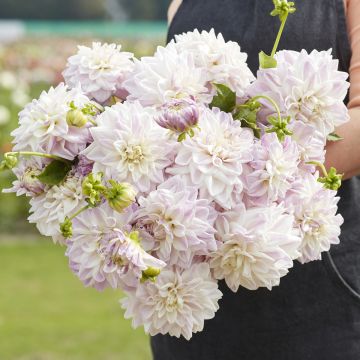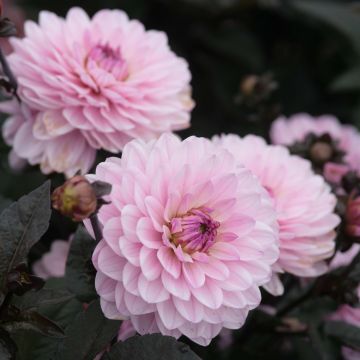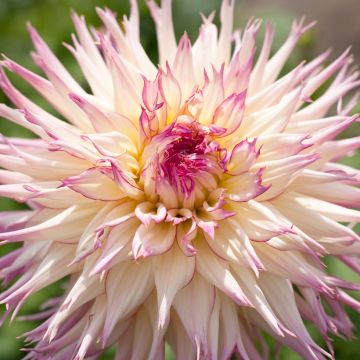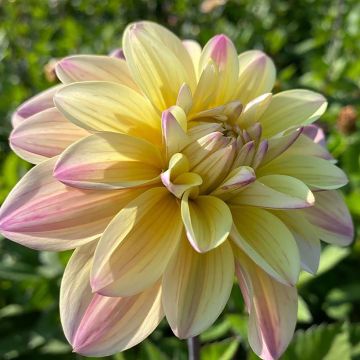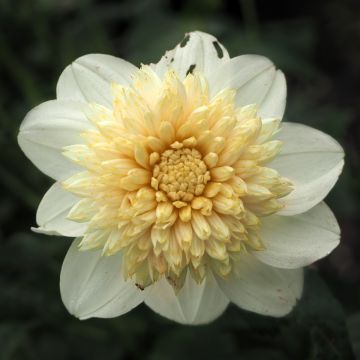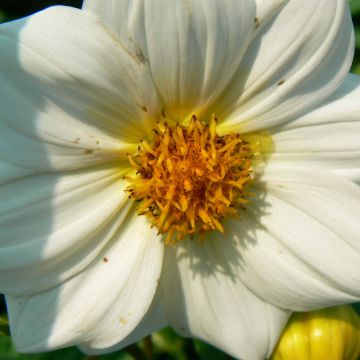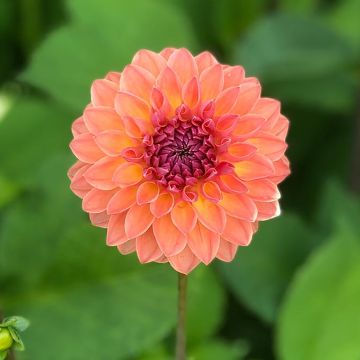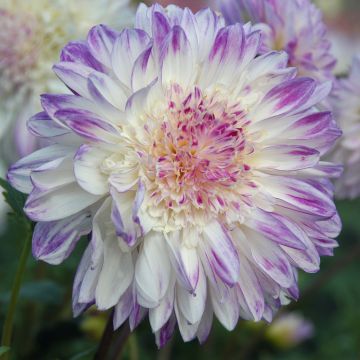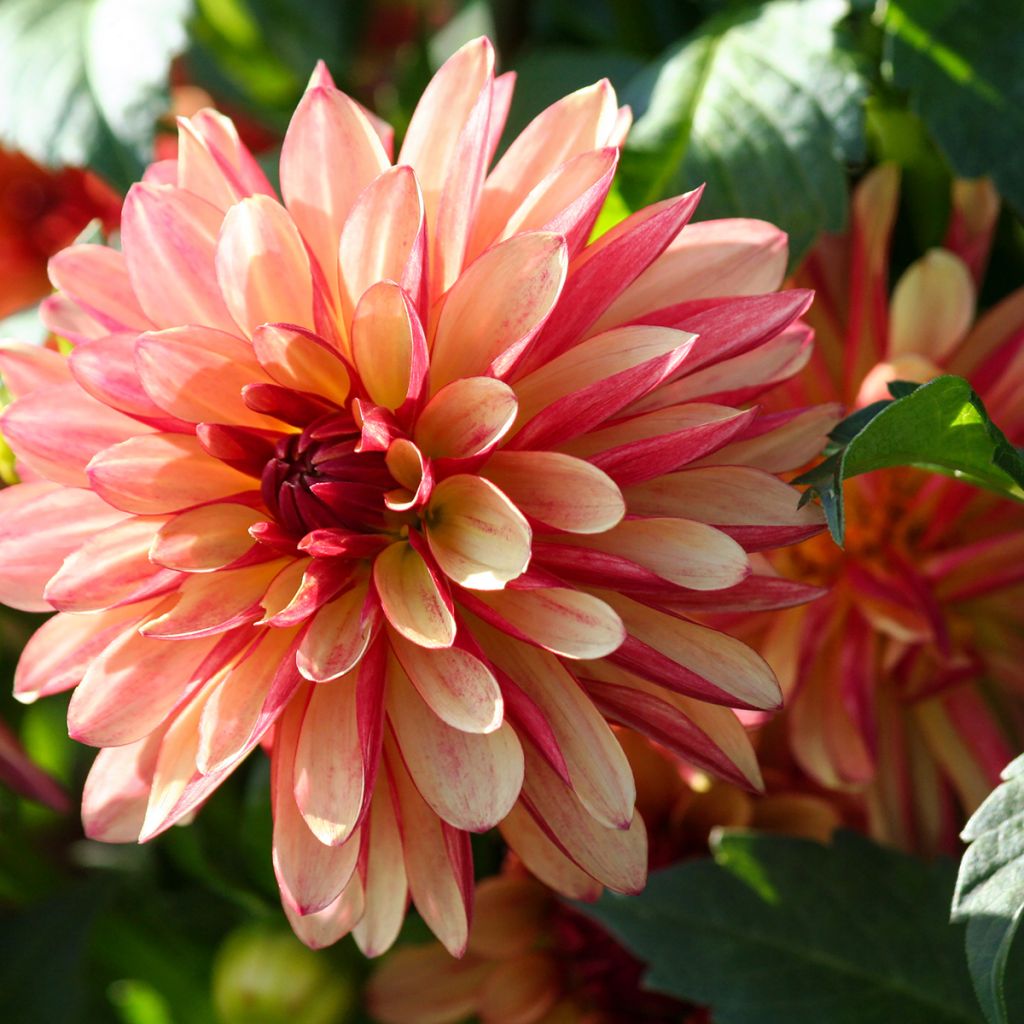

Dahlia Crazy Legs
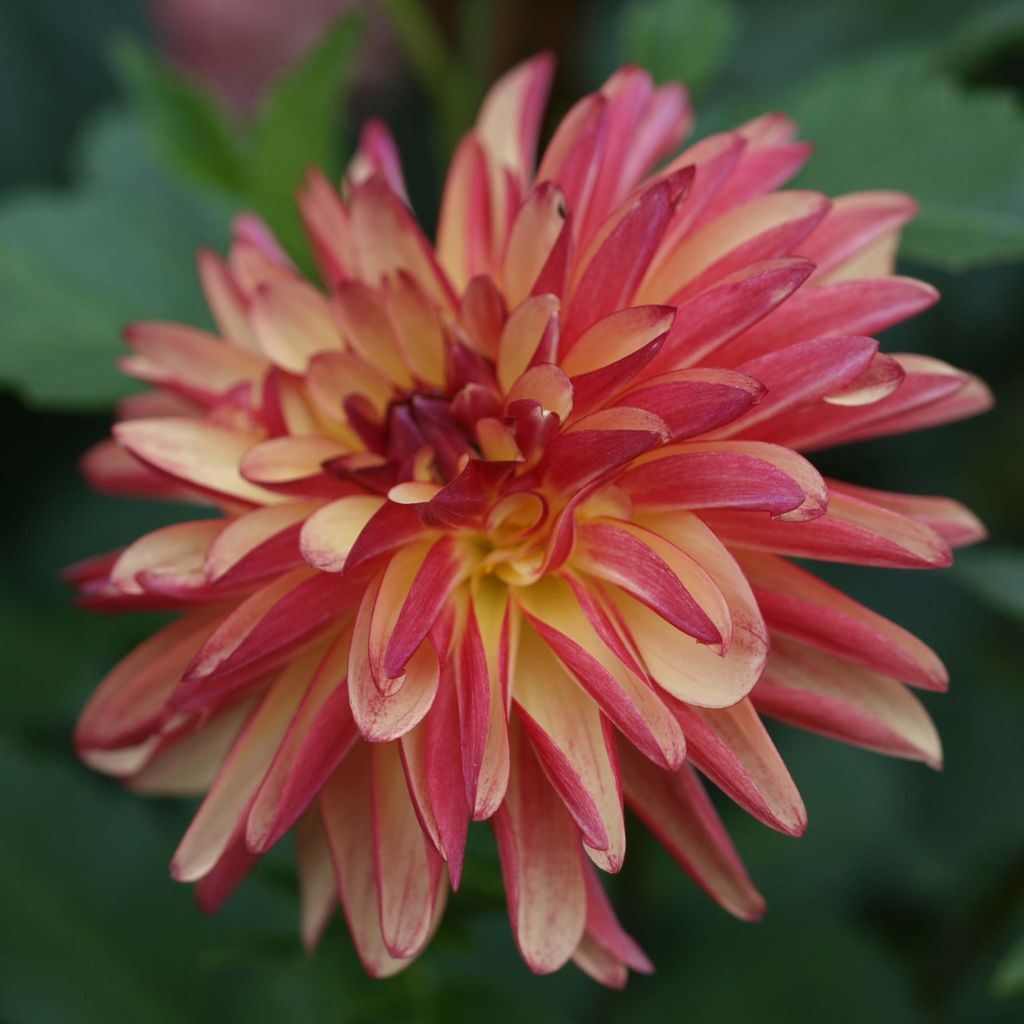

Dahlia Crazy Legs
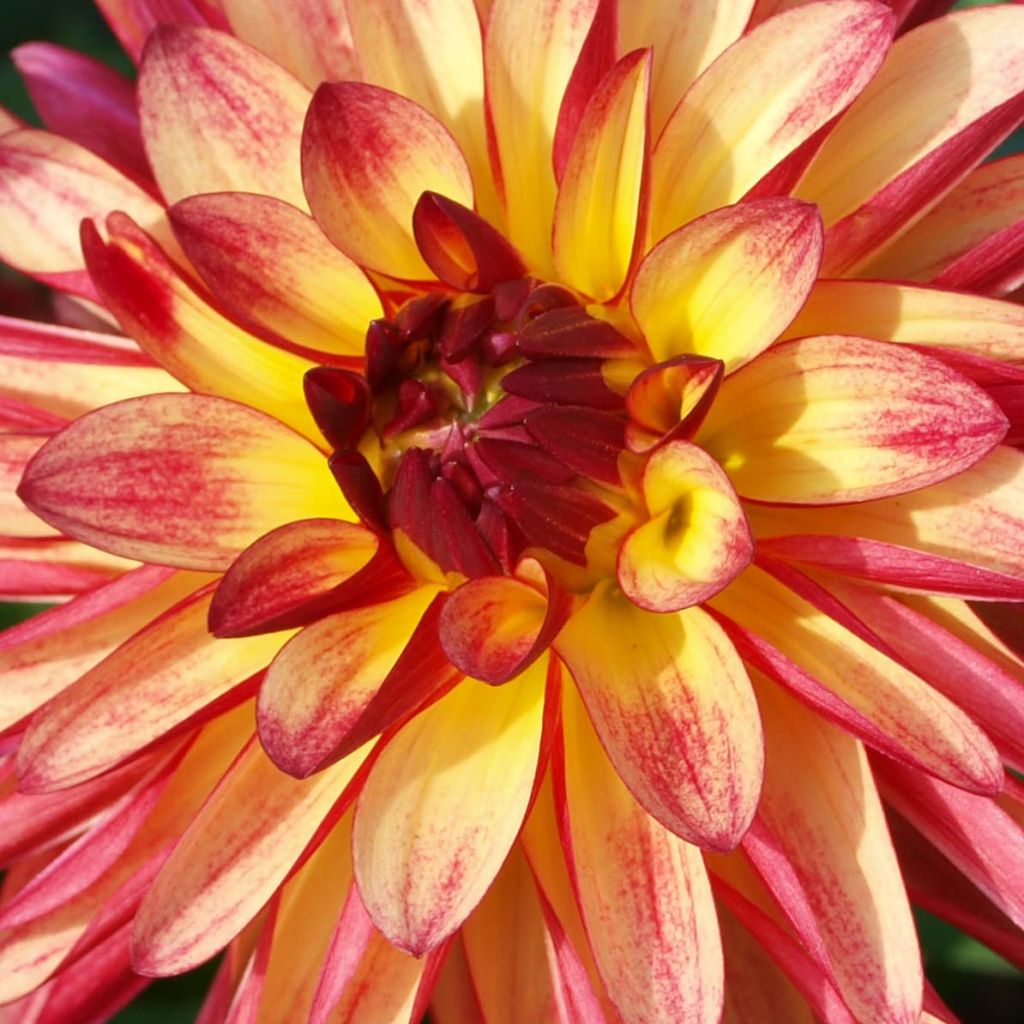

Dahlia Crazy Legs
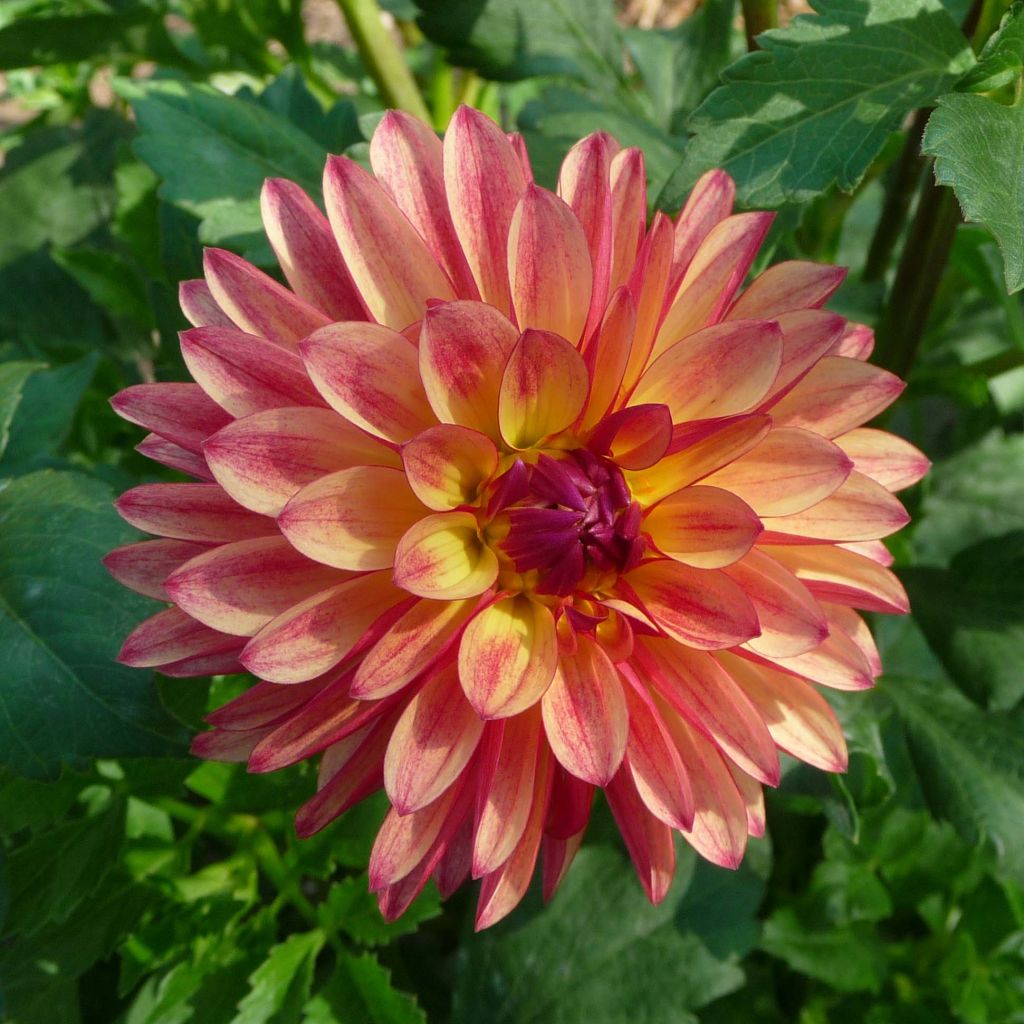

Dahlia Crazy Legs
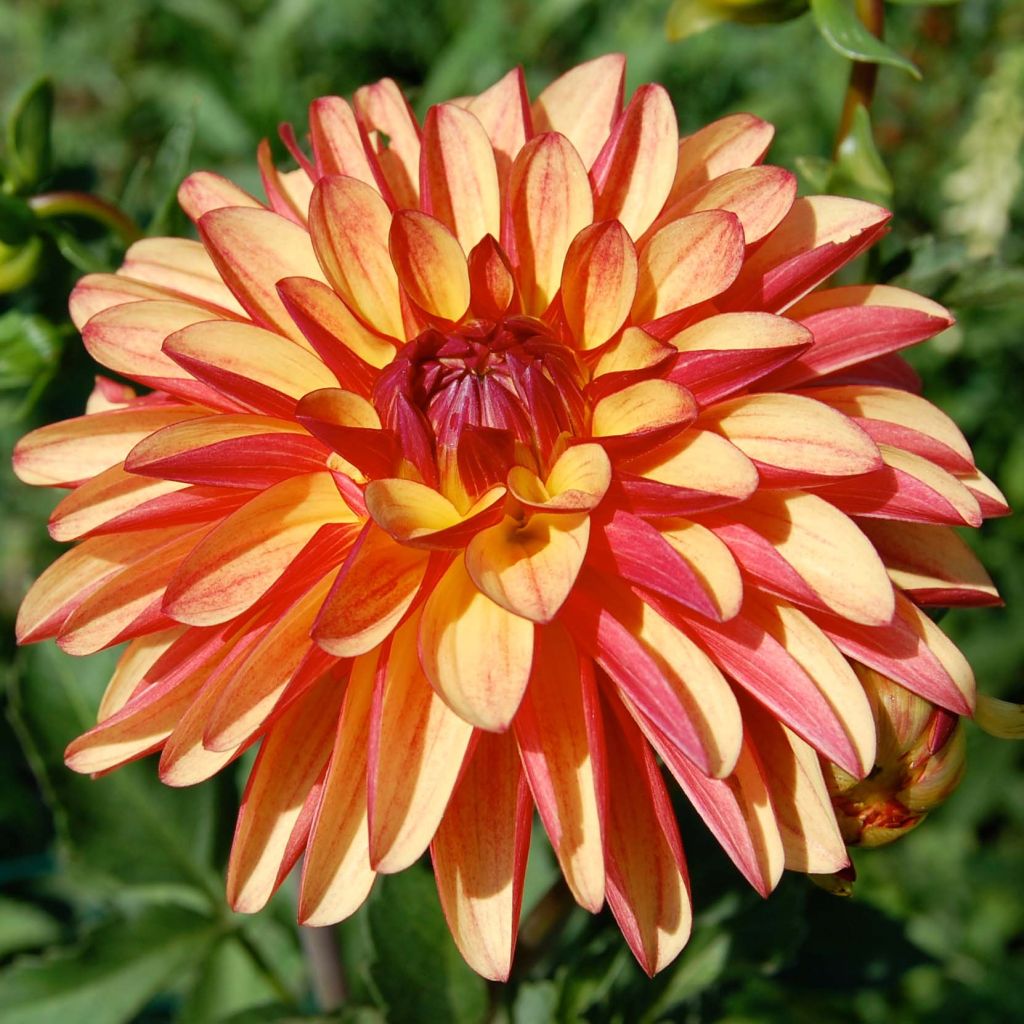

Dahlia Crazy Legs
Dahlia Crazy Legs
Dahlia Crazy Legs
Dahlia
This item cannot be shipped to the selected country
Delivery charge from €5.90
More information
Schedule delivery date,
and select date in basket
This plant carries a 6 months recovery warranty
More information
We guarantee the quality of our plants for a full growing cycle, and will replace at our expense any plant that fails to recover under normal climatic and planting conditions.
From €5.90 for pickup delivery and €6.90 for home delivery
Express home delivery from €8.90.

Does this plant fit my garden?
Set up your Plantfit profile →
Description
Dahlia Crazy Legs is part of these recent varieties of Decorative Dahlias, whose inflorescences are described as stellar. It seduces with its bi-coloured tones with spicy notes, very trendy, mixing on its petals shades of soft orange and bronze, with a curved shape revealing a darker reverse, intermediate between coppery orange and red-pink, in a harmony of colours both contrasting and nostalgic. These medium-sized flowers are carried by long stems ideal for composing bouquets, on a bush filled with abundant, vibrant foliage. The prolific, weather-resistant plant offers a magnificent and constantly renewed spectacle from July until the first frosts.
Dahlias are tuberous plants from the large Asteraceae family, originally from the high plateaus of Mexico. At present, the some 25,000 horticultural varieties obtained by humans have invaded, for our greatest pleasure, gardens all over the world. Dahlias are classified according to the shape of their flowers.
'Crazy Legs', introduced in 1990, is classified in the category of Decorative Dahlias. In this group, the coloured ligules of the head are regularly arranged in a spiral, they can be bent towards the stem or curled for example. In this variety, the heads measure only 7 to 8cm (3in) in diameter and their ligules are rather elongated and convex, slightly curved towards the stem. Flowering takes place from July to October-November. Depending on the ripeness of the flower, the overall orange colour of this variety can take on different shades ranging from more or less peach, with a darker reverse tinged with red, the compact centre of the inflorescence always leaning towards purple. The plant will reach an average height of 1m (3ft), and 50 to 60cm (20 to 24in) in width, with a bushy, dense and upright habit. The very branched stems are hollow, and the leaves are opposite, pinnately compound, meaning they are divided into 3 or 5 leaflets, which have very denticulate lobes. The leaves are medium green, and the stems, particularly long, are more or less tinged with purple.
To promote flowering and extend the flowering period, take care to remove faded flowers. Even better, regularly compose seductive colourful bouquets by combining various varieties. Dahlias go well with gauras and cleomes that will lighten their generous silhouette. The bright and soft flowers of Crazy Legs also allow for numerous combinations in floral arrangements, especially with red flowers. The medium size of this variety makes it suitable for the centre of mixed borders, to structure an ensemble composed of bushy foliage plants (Cotinus, Compact Winged Euonymus, Loropetalum) and lower plants. The flowering of Echinaceas is perfect to accompany that of Dahlias, they occur simultaneously, as well as the flowering of perennial salvias for example. Also consider grasses (Briza media, Miscanthus saccharifolius, Stipa arundinacea, Eragrostis trichodes) that take on beautiful colours in autumn.
As a star plant in ornamental gardens, Dahlias are undoubtedly beautiful flowers, they are perfect in flower beds but can also enhance the vegetable garden. In Mexico, this tuberous plant was first cultivated as a root vegetable for consumption. Its poor taste qualities quickly assigned it the status of an ornamental plant. Since then, the interest in their beautiful exuberance has never waned.
Report an error about the product description
Dahlia Crazy Legs in pictures
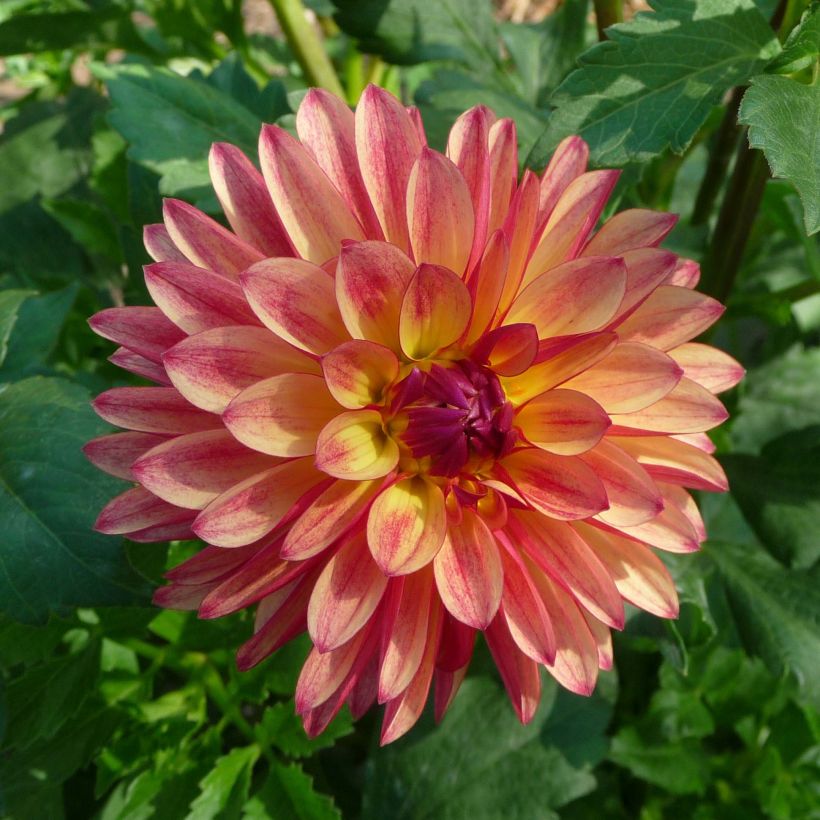

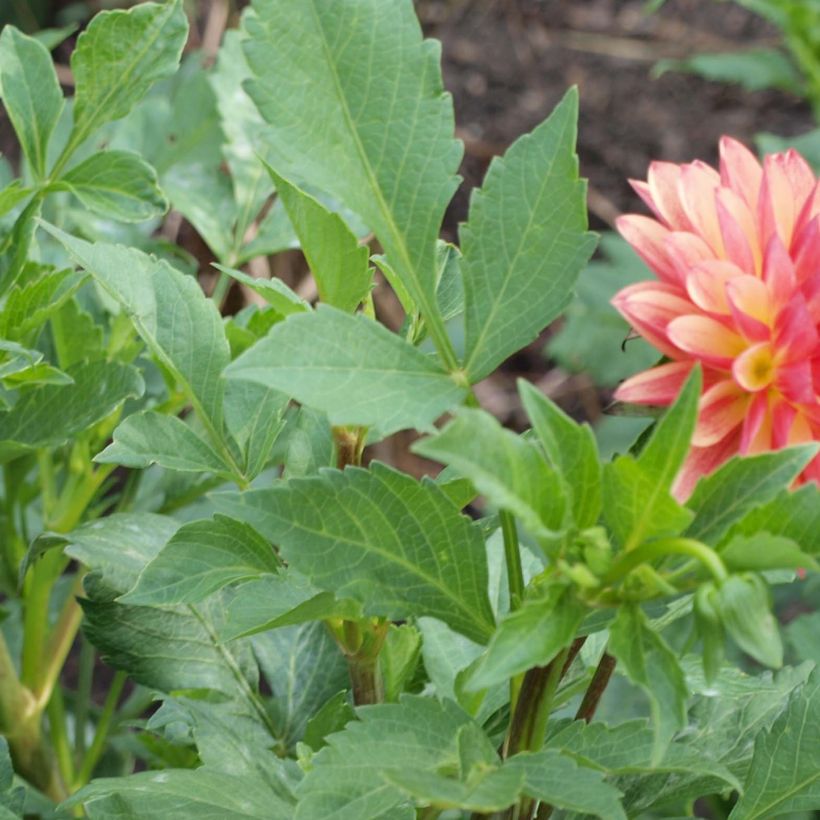

Plant habit
Flowering
Foliage
Botanical data
Dahlia
Crazy Legs
Asteraceae
Dahlia
Cultivar or hybrid
Other Ornamental Dahlias
Planting and care
The 'Crazy Legs' decorative Dahlia is easy to grow in all regions. For abundant flowering, it is good to follow a few simple rules: plant the tubers in full sun as soon as the last frost has passed. Rich, fresh, and well-drained soils are perfect. However, waterlogging would promote the rotting of the tubers. Feel free to amend the soil with compost and sand if necessary. Work the soil deeply and enrich it, for example, with bonemeal. Place your tuber and crumble the soil well to fill without air pockets. Your dahlia should be covered with about 6 cm (2in) of soil. At the end of planting, water once abundantly and then regularly renew this watering during the first 6 weeks to help with rooting.
Dahlias are sensitive to cold and need to be overwintered. In November, the first frost causes the foliage to blacken, and it is time to dig them up. Carefully unearth the tubers. Remove as much soil as possible. Let the foliage dry so that the tubers can replenish their reserves. Then cut the stems to 10 cm (4in). Spread your bulbs in a box on newspaper. Store them frost-free in a dry, cool, and dark place, such as a frost-free garage or attic, for example. In warmer regions, close to the coast, experiencing only a few days of frost per year, it is possible to leave them in place. In this case, simply cover the ground with a layer of leaves or straw as protection.
This tall Dahlia, with its hollow stems, is still sensitive to strong winds or heavy rains. To overcome this inconvenience, you can stake it, but let's agree, it's not very aesthetic. On the other hand, by pinching the stems early or removing the axial flower buds, you will spread out the habit of the plant, which will offer more resistance to bad weather. At the same time, you channel the flow of sap to a single flower, which will become larger and stronger.
Planting period
Intended location
Care
-
, onOrder confirmed
Reply from on Promesse de fleurs
Dahlias
Haven't found what you were looking for?
Hardiness is the lowest winter temperature a plant can endure without suffering serious damage or even dying. However, hardiness is affected by location (a sheltered area, such as a patio), protection (winter cover) and soil type (hardiness is improved by well-drained soil).

Photo Sharing Terms & Conditions
In order to encourage gardeners to interact and share their experiences, Promesse de fleurs offers various media enabling content to be uploaded onto its Site - in particular via the ‘Photo sharing’ module.
The User agrees to refrain from:
- Posting any content that is illegal, prejudicial, insulting, racist, inciteful to hatred, revisionist, contrary to public decency, that infringes on privacy or on the privacy rights of third parties, in particular the publicity rights of persons and goods, intellectual property rights, or the right to privacy.
- Submitting content on behalf of a third party;
- Impersonate the identity of a third party and/or publish any personal information about a third party;
In general, the User undertakes to refrain from any unethical behaviour.
All Content (in particular text, comments, files, images, photos, videos, creative works, etc.), which may be subject to property or intellectual property rights, image or other private rights, shall remain the property of the User, subject to the limited rights granted by the terms of the licence granted by Promesse de fleurs as stated below. Users are at liberty to publish or not to publish such Content on the Site, notably via the ‘Photo Sharing’ facility, and accept that this Content shall be made public and freely accessible, notably on the Internet.
Users further acknowledge, undertake to have ,and guarantee that they hold all necessary rights and permissions to publish such material on the Site, in particular with regard to the legislation in force pertaining to any privacy, property, intellectual property, image, or contractual rights, or rights of any other nature. By publishing such Content on the Site, Users acknowledge accepting full liability as publishers of the Content within the meaning of the law, and grant Promesse de fleurs, free of charge, an inclusive, worldwide licence for the said Content for the entire duration of its publication, including all reproduction, representation, up/downloading, displaying, performing, transmission, and storage rights.
Users also grant permission for their name to be linked to the Content and accept that this link may not always be made available.
By engaging in posting material, Users consent to their Content becoming automatically accessible on the Internet, in particular on other sites and/or blogs and/or web pages of the Promesse de fleurs site, including in particular social pages and the Promesse de fleurs catalogue.
Users may secure the removal of entrusted content free of charge by issuing a simple request via our contact form.
The flowering period indicated on our website applies to countries and regions located in USDA zone 8 (France, the United Kingdom, Ireland, the Netherlands, etc.)
It will vary according to where you live:
- In zones 9 to 10 (Italy, Spain, Greece, etc.), flowering will occur about 2 to 4 weeks earlier.
- In zones 6 to 7 (Germany, Poland, Slovenia, and lower mountainous regions), flowering will be delayed by 2 to 3 weeks.
- In zone 5 (Central Europe, Scandinavia), blooming will be delayed by 3 to 5 weeks.
In temperate climates, pruning of spring-flowering shrubs (forsythia, spireas, etc.) should be done just after flowering.
Pruning of summer-flowering shrubs (Indian Lilac, Perovskia, etc.) can be done in winter or spring.
In cold regions as well as with frost-sensitive plants, avoid pruning too early when severe frosts may still occur.
The planting period indicated on our website applies to countries and regions located in USDA zone 8 (France, United Kingdom, Ireland, Netherlands).
It will vary according to where you live:
- In Mediterranean zones (Marseille, Madrid, Milan, etc.), autumn and winter are the best planting periods.
- In continental zones (Strasbourg, Munich, Vienna, etc.), delay planting by 2 to 3 weeks in spring and bring it forward by 2 to 4 weeks in autumn.
- In mountainous regions (the Alps, Pyrenees, Carpathians, etc.), it is best to plant in late spring (May-June) or late summer (August-September).
The harvesting period indicated on our website applies to countries and regions in USDA zone 8 (France, England, Ireland, the Netherlands).
In colder areas (Scandinavia, Poland, Austria...) fruit and vegetable harvests are likely to be delayed by 3-4 weeks.
In warmer areas (Italy, Spain, Greece, etc.), harvesting will probably take place earlier, depending on weather conditions.
The sowing periods indicated on our website apply to countries and regions within USDA Zone 8 (France, UK, Ireland, Netherlands).
In colder areas (Scandinavia, Poland, Austria...), delay any outdoor sowing by 3-4 weeks, or sow under glass.
In warmer climes (Italy, Spain, Greece, etc.), bring outdoor sowing forward by a few weeks.



































